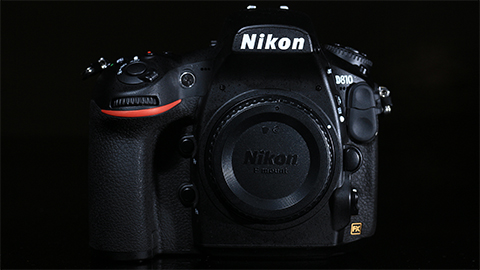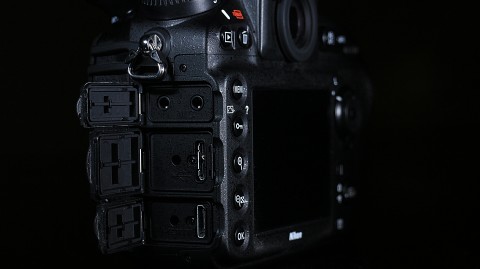It’s been a while since we took a full-frame dSLR out for a spin, which is why we were all picking our jaws up on the floor when Nikon Philippines lend us with one of their latest FX cameras – the Nikon D810.

Design and Construction
By and large, Nikon has not made any significant changes on the D810’s design compared to the D800e and its direct predecessor, the D800. To the camera maker’s credit though, they didn’t really have to alter a lot since they pretty much have the ergonomics and design squared away since the release of the D800.
While the D810 does look like an exact replica of the two FX cameras that came before it, Nikon has made some subtle improvements on a few areas to bridge the gap that the D800/D800E has on the design standpoint. We’re not sure though what to make of these “subtle improvements”, especially if we put ourselves in the shoes of current D800/D800E users, but any improvements should be good, right?
The first change that we noticed is the camera grip; it’s slightly narrower and a tad deeper compared to the ones on the D800/D800E. Next is the use of round buttons for the keys on the front instead of half-circle buttons found on its predecessors.
Instead of a single rubber flap that hides the ports from plain sight, the D810 has three plastic doors for each of the ports on the left side which namely the Microphone, USB 3.0 and HDMI ports.

Apart from the addition of the “i” button near the Live View key, the D810 has pretty much inherited all the controls, not to mention the button layout, of the D800/E which should be good news to those who are looking to upgrade from the previous models.
The only other thing that’s worth noting in this area is that the D810’s 3.2-inch display has more pixels (1.2M-dot) compared to both the D800 and the D800E which only has 921K-dot resolution.
Controls and Ergonomics
After week of using the D810, we are happy to report that the D810 was a joy to use. All of the buttons are where they’re supposed to be and most of them, excluding the four keys at the top for White Balance, Image Quality, ISO and Metering Mode, provide a satisfying tactile feedback when pressed.
All of the three dials for the Aperture, Shutter Speed, as well as the lockable Mode dial on the left are ideally placed and have a nice click to it when turned.
Meanwhile, the shutter release button requires minimal pressure to activate the autofocus (if enabled in the menu) from its normal state. The same can be said when going from AF to actually releasing the shutter, it’s neither too soft nor too rigid which lessens the strain from our index finger and minimizes the shake usually caused by pressing the shutter button when shooting.
Viewfinder and Live View
We don’t normally delve too much on the viewfinder of the cameras that we review, but we feel that we have to in the case of the D810. Apart from offering 100% viewfinder coverage and 0.7 times magnification, features we’ve come to expect from a top-notch dSLR camera, the D810 has an overlay which allows it to display other information that some users may find helpful.
Like the optical viewfinder, the live view also got a minor bump thanks to a more pixel-packed display. Pictures appear on the sharper and more realistic on the D810’s 1.2M-dot LCD screen, not to mention it offers very good legibility even under direct sunlight.
Initial Verdict
The Nikon D810 hails from a long line of FX-series cameras. As such, we expect nothing less from it as far as its design and build standpoint which, for the most part, were passed down from the D800 and the D800E.
Nikon D810 specs:
36.3MP CMOS Full-frame (35.9 x 24 mm)
EXPEED 4 image processor
Hybrid AF System
51-point AF points (15 cross-type)
ISO 64 – 12800
30 secs. – 1/8000 shutter speed
5fps continuous drive
Optical Viewfinder, 100% coverage
0.7x magnification
Built-in Flash
GN: 12.0m at ISO 100
Optional External Flash via Hot shoe
3.2” Fixed LCD panel
1.2M-dot resolution, WRGB
1080p video recording @60fps
SD / SDHC / SDXC
RAW + JPEG file format
USB 3.0
EN-EL15 Li-Ion battery (1200 shot CIPA)
146 x 123 x 82 mm
980g
Despite of the similarities that this full-frame dSLR camera shares with its predecessor, the D810 still has a few tricks up its sleeves that would hopefully convince us that; (1) it’s worth the USD3,300PHP 193,662INR 279,674EUR 3,143CNY 24,018 asking price and (2) if it’s a worthy upgrade to the D800/D800E. We’ll find that out in our full review which should be up in a couple of weeks.
In the meantime, here are a few shots that we took using the D810 and the loaned Nikkor 24-120mm F4 VR G lens.
[fancygallery id=”146″ album=”179″]

YugaTech.com is the largest and longest-running technology site in the Philippines. Originally established in October 2002, the site was transformed into a full-fledged technology platform in 2005.
How to transfer, withdraw money from PayPal to GCash
Prices of Starlink satellite in the Philippines
Install Google GBox to Huawei smartphones
Pag-IBIG MP2 online application
How to check PhilHealth contributions online
How to find your SIM card serial number
Globe, PLDT, Converge, Sky: Unli fiber internet plans compared
10 biggest games in the Google Play Store
LTO periodic medical exam for 10-year licenses
Netflix codes to unlock hidden TV shows, movies
Apple, Asus, Cherry Mobile, Huawei, LG, Nokia, Oppo, Samsung, Sony, Vivo, Xiaomi, Lenovo, Infinix Mobile, Pocophone, Honor, iPhone, OnePlus, Tecno, Realme, HTC, Gionee, Kata, IQ00, Redmi, Razer, CloudFone, Motorola, Panasonic, TCL, Wiko
Best Android smartphones between PHP 20,000 - 25,000
Smartphones under PHP 10,000 in the Philippines
Smartphones under PHP 12K Philippines
Best smartphones for kids under PHP 7,000
Smartphones under PHP 15,000 in the Philippines
Best Android smartphones between PHP 15,000 - 20,000
Smartphones under PHP 20,000 in the Philippines
Most affordable 5G phones in the Philippines under PHP 20K
5G smartphones in the Philippines under PHP 16K
Smartphone pricelist Philippines 2024
Smartphone pricelist Philippines 2023
Smartphone pricelist Philippines 2022
Smartphone pricelist Philippines 2021
Smartphone pricelist Philippines 2020
jdGONEMAD says:
nope. this is not the latest. Nikon D750 is the latest FX.
Ronnie Bulaong says:
“…one of their latest FX cameras – the Nikon D810.” Just saying.